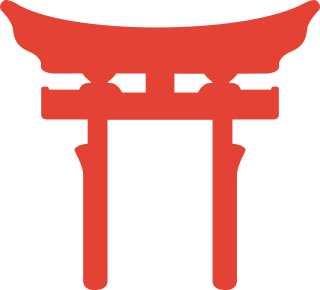 W
WFudoki (風土記) are ancient reports on provincial culture, geography, and oral tradition presented to the reigning monarchs of Japan, also known as local gazetteers. They contain agricultural, geographical, and historical records as well as mythology and folklore. Fudoki manuscripts also document local myths, rituals, and poems that are not mentioned in the Kojiki and the Nihon Shoki chronicles, which are the most important literature of the ancient national mythology and history. In the course of national unification, the imperial court enacted a series of criminal and administrative codes called ritsuryō and surveyed the provinces established by such codes to exert greater control over them.
 W
WJinnō Shōtōki is a Japanese historical book written by Kitabatake Chikafusa. The work sought both to clarify the genesis and potential consequences of a contemporary crisis in Japanese politics, and to dispel or at least ameliorate the prevailing disorder.
 W
WKogo Shūi (古語拾遺) is a historical record of the Inbe clan of Japan written in the early Heian period (794–1185). It was composed by Inbe no Hironari (斎部広成) in 807 using material transmitted orally over several generations of the Inbe clan.
 W
WKojiki , also sometimes read as Furukotofumi or Furukotobumi, is an early Japanese chronicle of myths, legends, hymns, genealogies, oral traditions, and semi-historical accounts down to 641 concerning the origin of the Japanese archipelago, the kami (神), and the Japanese imperial line. It is claimed in its preface to have been composed by Ō no Yasumaro at the request of Empress Genmei in the early 8th century (711–712), and thus is usually considered to be the oldest extant literary work in Japan. The myths contained in the Kojiki as well as the Nihon Shoki (日本書紀) are part of the inspiration behind many practices. Later, they were incorporated into Shinto practices such as the misogi purification ritual.
 W
WThe Kojiki-den (古事記伝) is a 44-volume commentary on the Kojiki written by the kokugaku scholar Motoori Norinaga.
 W
WKujiki (旧事紀), or Sendai Kuji Hongi (先代旧事本紀), is a historical Japanese text. It was generally believed to have been one of the earliest Japanese histories until the middle of the Edo period, when scholars such as Tokugawa Mitsukuni successfully contended that it was an imitation based on the Nihon Shoki, the Kojiki and the Kogo Shūi. Scholarship on the Kujiki generally considers it to contain some genuine elements, specifically that Book 5 preserves traditions of the Mononobe and Owari clans, and that Book 10 preserves the earlier historical record the Kokuzō Hongi.
 W
WThe Nihon Shoki (日本書紀), sometimes translated as The Chronicles of Japan, is the second-oldest book of classical Japanese history. The book is also called the Nihongi . It is more elaborate and detailed than the Kojiki, the oldest, and has proven to be an important tool for historians and archaeologists as it includes the most complete extant historical record of ancient Japan. The Nihon Shoki was finished in 720 under the editorial supervision of Prince Toneri and with the assistance of Ō no Yasumaro dedicated to Empress Genshō.
 W
WRyūkyū Shintō-ki (琉球神道記) or An account of the ways of the gods in Ryūkyū is a five-volume treatise of c. 1605/6 by the Jōdo-sect Japanese priest Taichū Ryōtei (1552–1639), who lived in Naha from 1603 to 1606. Unlike most Okinawan literature, it predates the Satsuma invasion of 1609. A woodblock print edition was published in Kyoto in 1648.